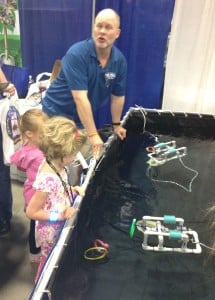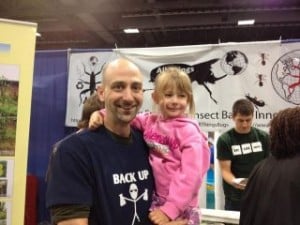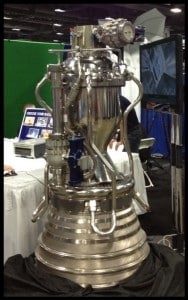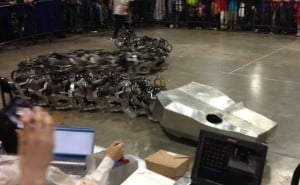
Today our family visited the truly awesome USA Science and Engineering Festival at the Mt. Vernon Convention Center in Washington. There were overwhelming amounts of exhibitors and shows and the place was absolutely packed. The exhibitors included everyone from companies like Lockheed Martin to elementary schools to college-level engineering and science departments. It was terrific to see so many people of all ages, shapes and colors “geeking out” (and I do mean that in the nicest, most complimentary way) on science and engineering.
Perhaps even more impressive than an event with enough exhibits to fill an entire convention hall was the number of people who were visiting. This free event must have drawn half of the populations of the DC metro area (okay, maybe that’s a slight exaggeration but the place was absolutely packed!). Of course, the fact that Jamie Hyneman and Adam Savage of TV’s MythBusters were on the program was a draw, for sure, but even during their performance, the rest of the exhibits were still absolutely teaming with people.
I’ve been thinking a lot about how naturally kids take to science when it’s presented in a child-friendly way. You don’t have to be a math geek or have a mechanical mind to appreciate how cool it is to, for example, watch plants grow differently if they’re kept in a cupboard vs. on a windowsill. (I did this experiment with our 4-year-old a few weeks ago and she woke up every morning so excited to check the progress of her plants.) And yet, it seems like as kids get older, science becomes more of a chore and they spend their free time playing sports and video games. And don’t get me wrong – sports are great (and even some video games are pretty good for kids), but sometimes I feel like we as parents aren’t doing enough to encourage a balance between these activities and ones that will build the skills kids will need to succeed as adults in the mid-21st century.



